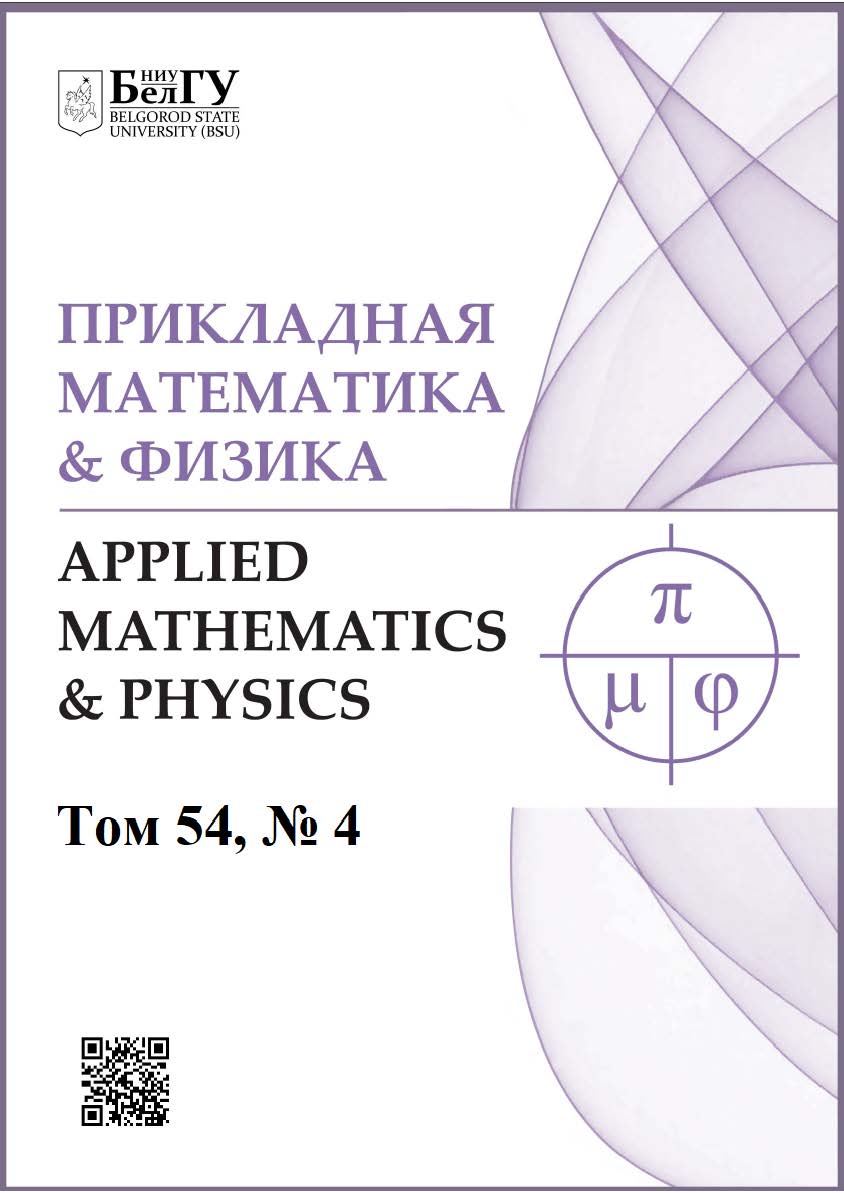Prediction of the plasticity of high-entropic alloys
DOI:
https://doi.org/10.52575/2687-0959-2022-54-4-271-276Keywords:
Machine Learning, High-Entropy Alloys, Plasticity, CompressionAbstract
Based on a database of 153 alloys, a surrogate model was trained using machine learning approaches to predict compressive strain-to-fracture in high-entropy alloys. As part of the work, the accuracy of the impact of the architecture of a fully connected artificial neural network (the number of hidden layers and the number of neurons in hidden layers) on the prediction accuracy was evaluated. It was shown that with an increase in the number of hidden layers, the absolute error decreases - from 5.4% for a single-connected neural network to 4.8% for a two-layer and 4.7% for a three-layer neural network.
Acknowledgements
The research was carried out with the financial support of the Ministry of Science and Higher Education of the Russian Federation under an agreement dated June 24, 2021. No. 075-11-2021-046 (IGK 000000S407521QLP0002) with JSC "SEZ "VladMiVa"under the complex project "Organization of high-tech production of export-oriented medical devices based on innovative structural materials for the purpose of import substitution based on developed technologies"with the participation of NRU "BelGU"in part performing research, development and technological work using the equipment of the Center for Collective Use "Technologies and Materials of the National Research University"BelSU ". The work was partially performed (computer time) with the support of the Russian Foundation for Basic Research project No. 20-53-56063.
Downloads
References
Cantor B. et al. 2004. Microstructural development in equiatomic multicomponent alloys, Materials Science and Engineering: A., 375: 213–218.
Chuang M. H. et al. 2011. Microstructure and wear behavior of AlxCo1. 5CrFeNi1. 5Tiy, high entropy alloys //ActaMaterialia, 59(16): 6308–6317.
Gao Q. Zhang. 2008. Ultraviolet-B-induced oxidative stress and antioxidant defense system responses in ascorbate-deficient vtc1 mutants of Arabidopsis thaliana. J Plant Physiol, 165(2): 138–48.
Gludovatz B. et al. 2014. A fracture-resistant high-entropy alloy for cryogenic applications //Science, 345(6201): 1153–1158.
Gorr B. et al. 2015. Phase equilibria, microstructure, and high temperature oxidation resistance of novel refractory high-entropy alloys. Journal of Alloys and Compounds, 624: 270–278.
Guo S. 2015. Phase selection rules for cast high entropy alloys: an overview. Materials Science and Technology, 31(10): 1223–1230.
Huang W., Martin P., Zhuang H. L. 2019. Machine-learning phase prediction of high-entropy alloys. Acta Materialia, 169: 225–236.
Jiang C., Uberuaga B. P. 2016. Efficient ab initio modeling of random multicomponent alloys. Physical review letters, 116(10): 105501.
Lederer Y. et al. 2018. The search for high entropy alloys: a high-throughput ab-initio approach. Acta Materialia, 159: 364–383.
Mishra B. et al. 2013. Experimental studies on the effect of size and shape of holes on damage and microstructure of high hardness armour steel plates under ballistic impact. Materials & Design, 43: 17–24.
Ramprasad R. et al. 2017. Machine learning in materials informatics: recent applications and prospects. npj Computational Materials 3.
SenkovO. N. et al. 2015.Accelerated exploration of multi-principal element alloys for structural applications. Calphad, 50: 32–48.
Sheng G. U. O., Liu C. T. 2011. Phase stability in high entropy alloys: Formation of solid-solution phase or amorphous phase. Progress in Natural Science: Materials International, 21(6): 433–446.
Steurer W. 2020. Single-phase high-entropy alloys–A critical update. Materials Characterization, 162: 110179.
Toda-Caraballo I., Rivera-D?az-del-Castillo P. E. J. 2015. Modelling solid solution hardening in high entropy alloys. Acta Materialia, 85: 14–23.
Tsai M. H., Yeh J.W. 2014. High-entropy alloys: a critical review. Materials Research Letters. 2(3): 107–123.
Wen C. et al. 2019. Machine learning assisted design of high entropy alloys with desired property. Acta Materialia, 170: 109–117.
Yang X., Zhang Y. 2012. Prediction of high-entropy stabilized solid-solution in multi-component alloys. Materials Chemistry and Physics, 132(2-3): 233–238.
Yeh J. W. et al. 2004. Nanostructured high-entropy alloys with multiple principal elements: novel alloy design concepts and outcomes. Advanced engineering materials, 6(5): 299–303.
Zhang Y. et al. 2020. Phase prediction in high entropy alloys with a rational selection of materials descriptors and machine learning models. Acta Materialia, 185: 528–539.
Abstract views: 251
##submission.share##
Published
How to Cite
Issue
Section
Copyright (c) 2022 Applied Mathematics & Physics

This work is licensed under a Creative Commons Attribution 4.0 International License.





